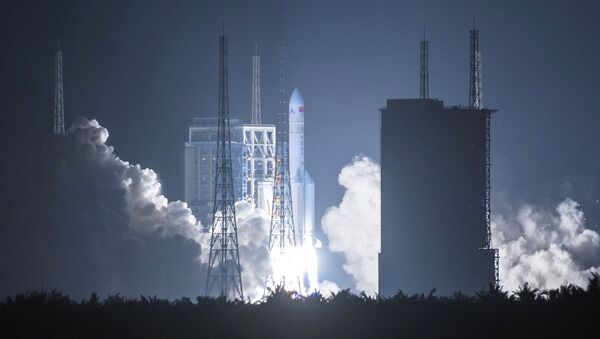"Since the appearance of the Chang Zheng 5 launch vehicle, it has been determined that it will carry out the mission of launching China's largest spacecraft," Qu said.
China successfully launched the Chang’e 5 #lunarprobe from the Wenchang Spacecraft Launch Site in Hainan 4:30am on Nov 24.
— People's Daily, China (@PDChina) November 23, 2020
This is the China's first sample return mission, which has been one of China's most complicated and difficult space tasks by far. #Change5 pic.twitter.com/Qok68vRSCE
"Starting next year, we are going to start carrying out launches as part of the mission to build our country's space station," the official said.
The station was named "Tiangong" (Heaven's Palace); earlier, two Chinese space laboratories, Tiangong 1 and Tiangong 2 operated in orbit.
Shenzhou 9 launched in June 2012 carrying 3 astronauts to China's first prototype space station, Tiangong-1.
— Latest in space (@latestinspace) March 20, 2020
Tiangong-1 and 2 have since been deorbited in preparation for Tiangong-3 in 2022.#Space #CNSA pic.twitter.com/XhjRTqGweQ
Three Chinese astronauts or six people during a crew change can be on the station simultaneously. The station is expected to be completed by 2022 with a total of 12 missions.
Last year, China’s first space lab, the Tiangong-2 (“Heavenly Palace”) space station, was successfully deorbited, becoming the country's first opportunity to carry out a long-term plant experiment in space.
In 2018, China announced the goals the country had set for its lunar program, including exploring both lunar poles by 2030, sending manned missions to the moon and establishing a permanent scientific research station there.


